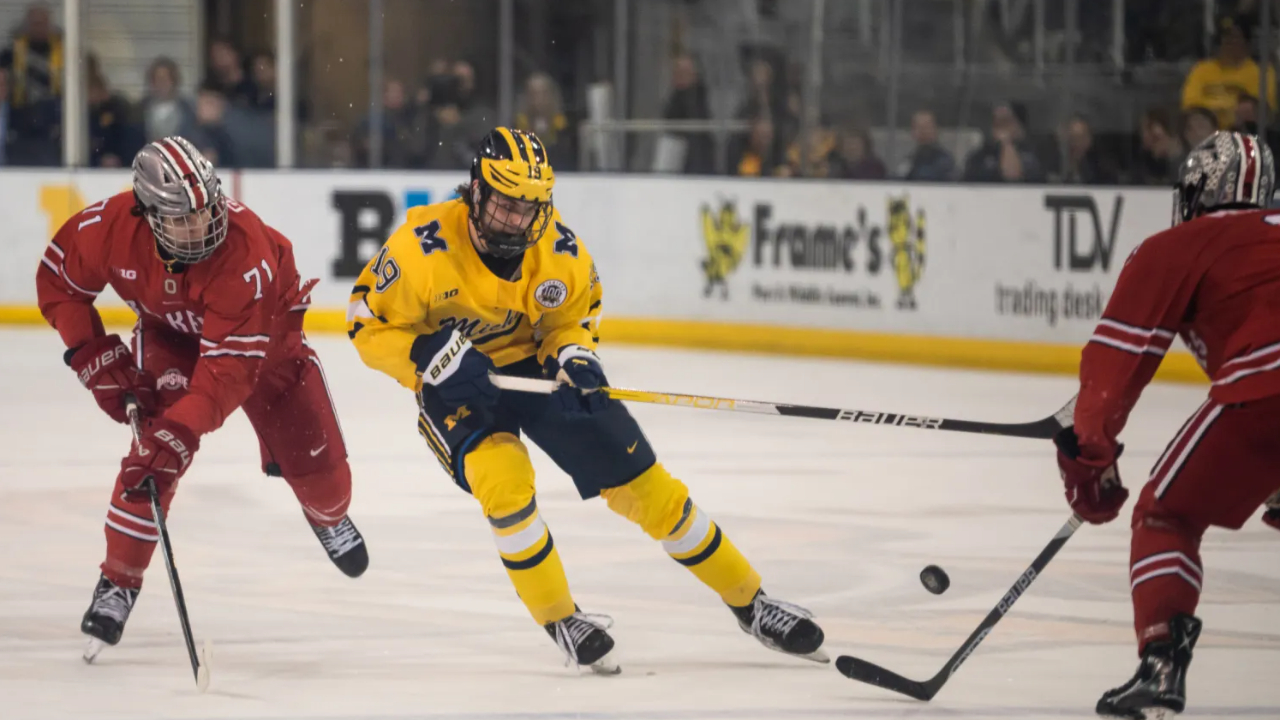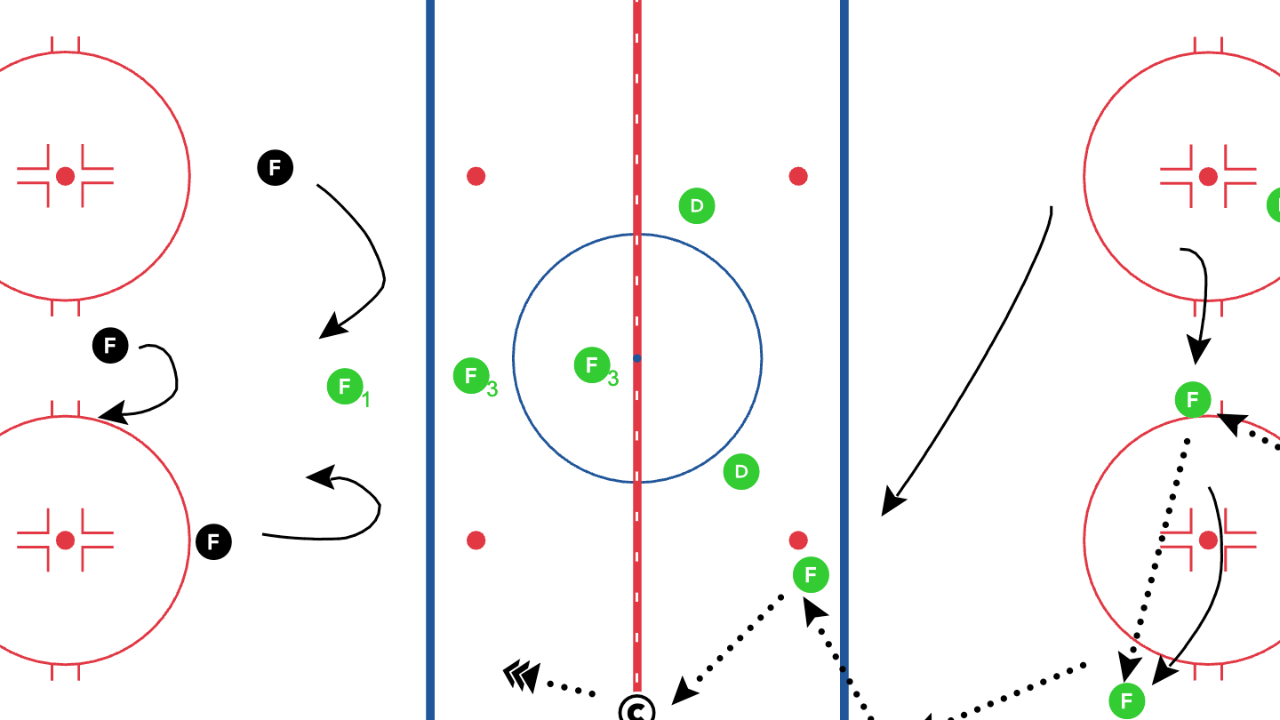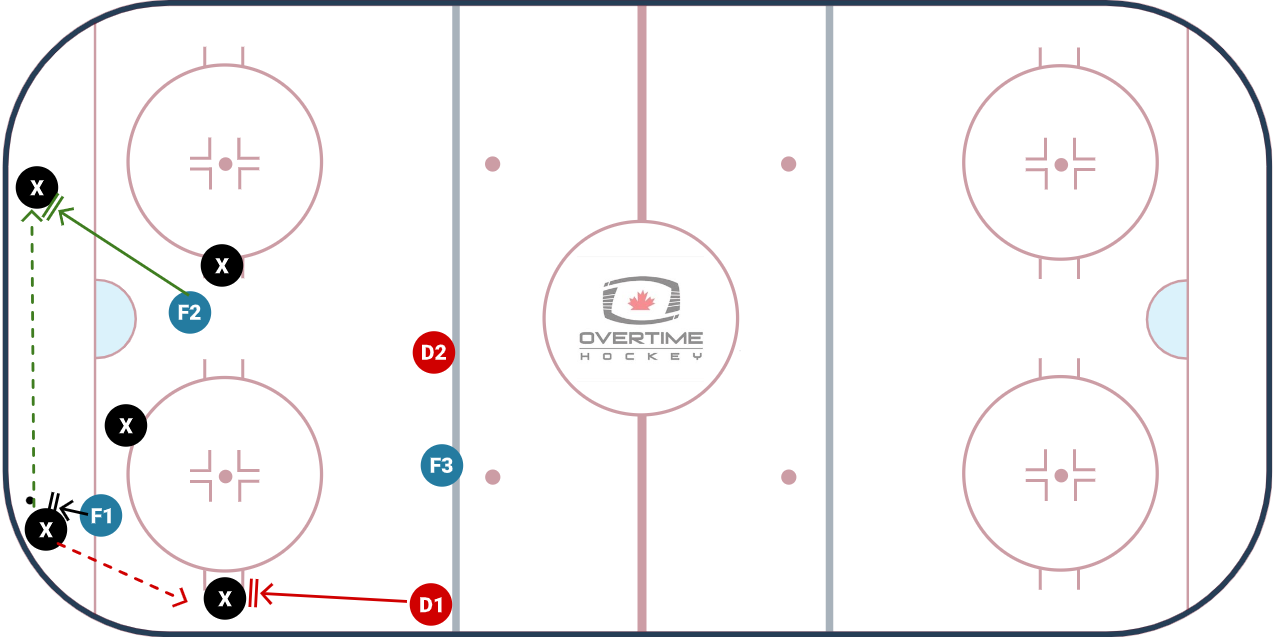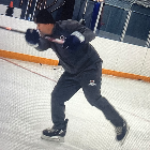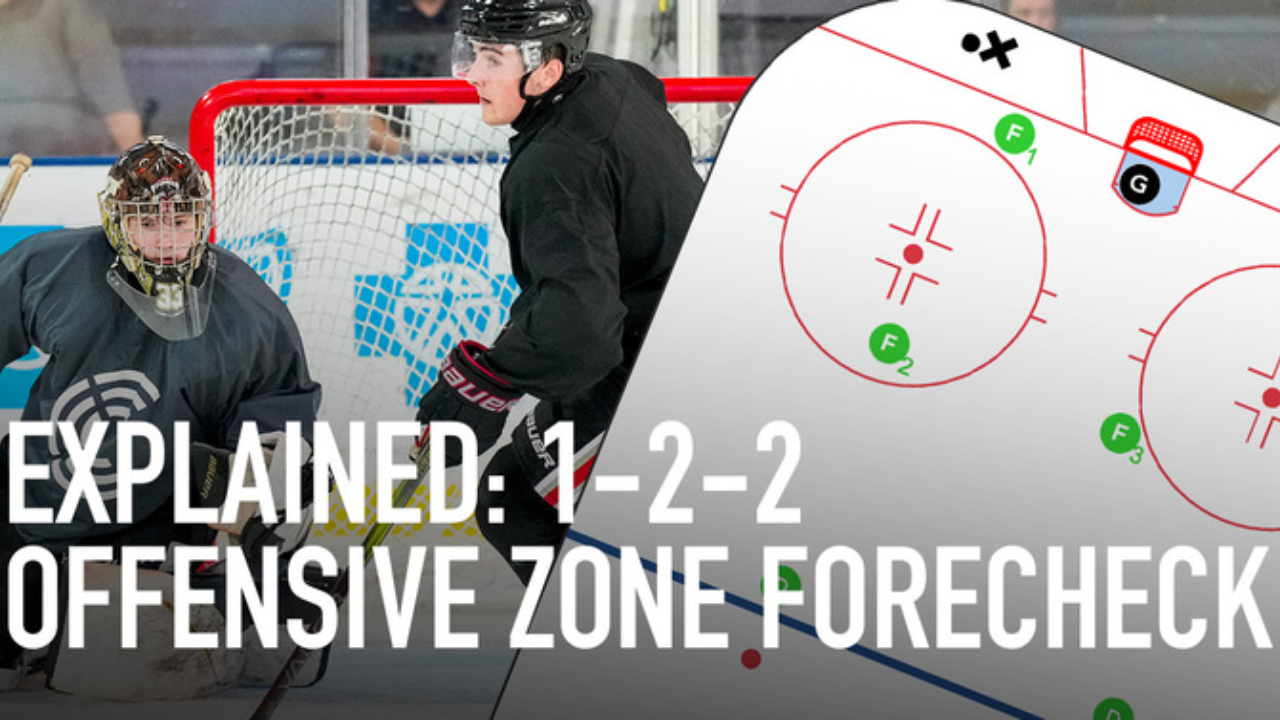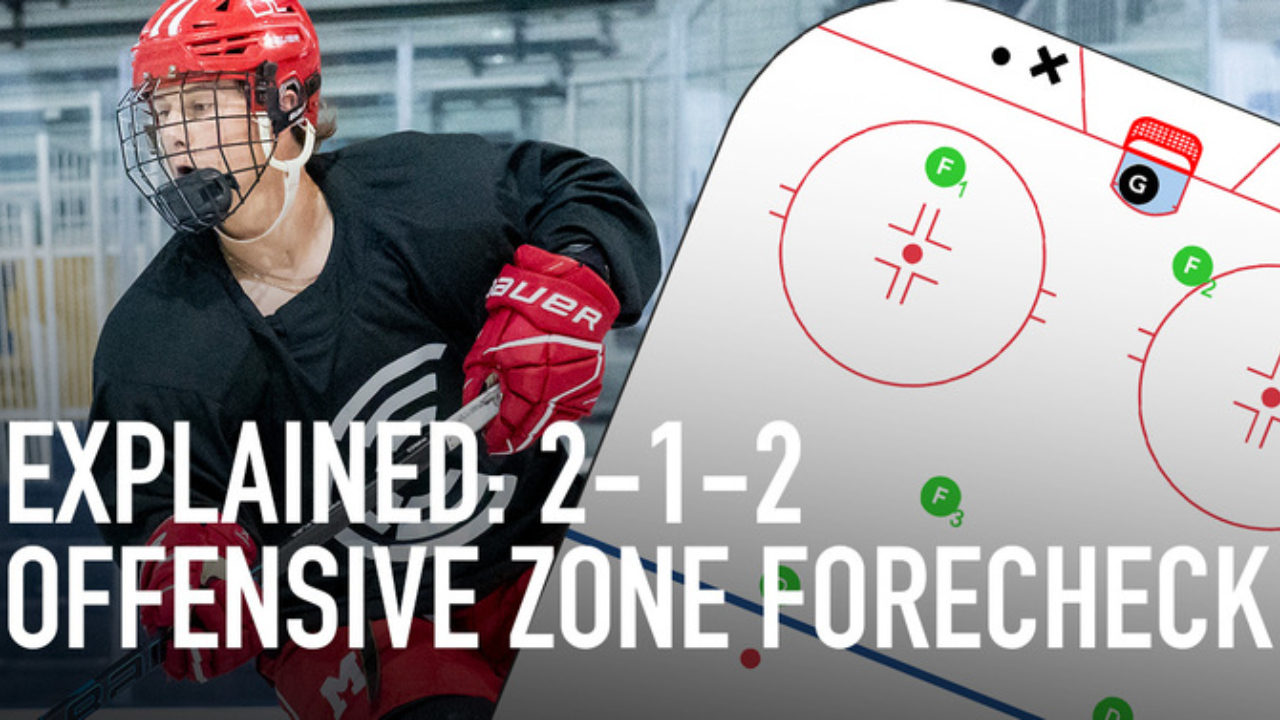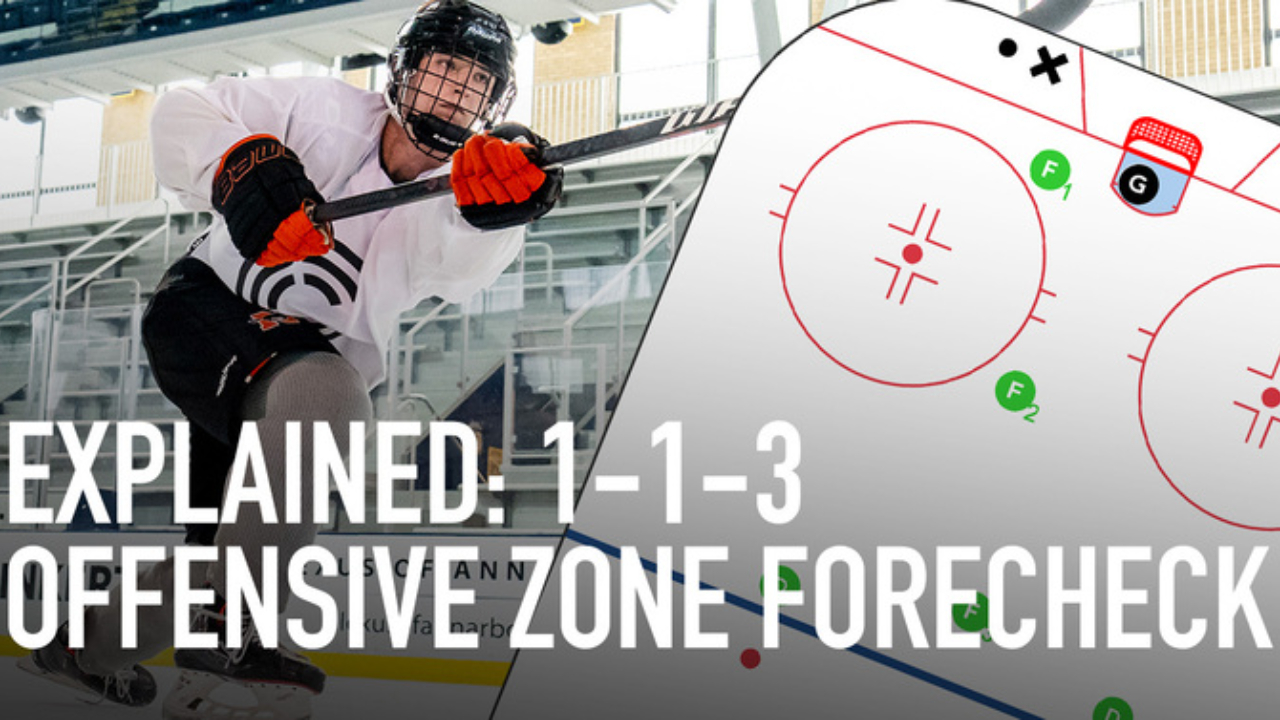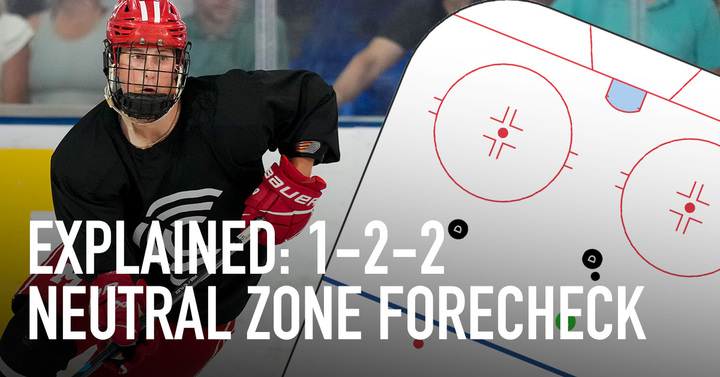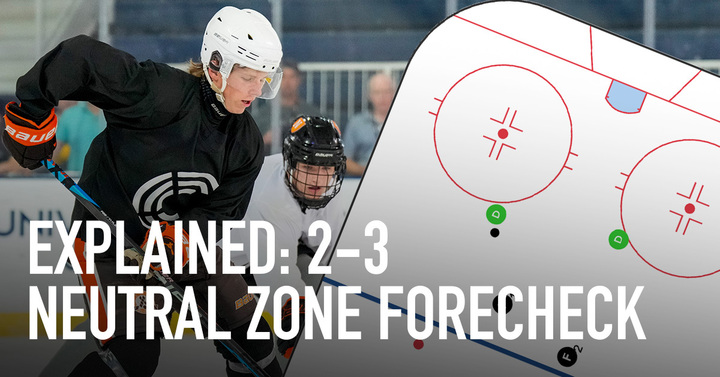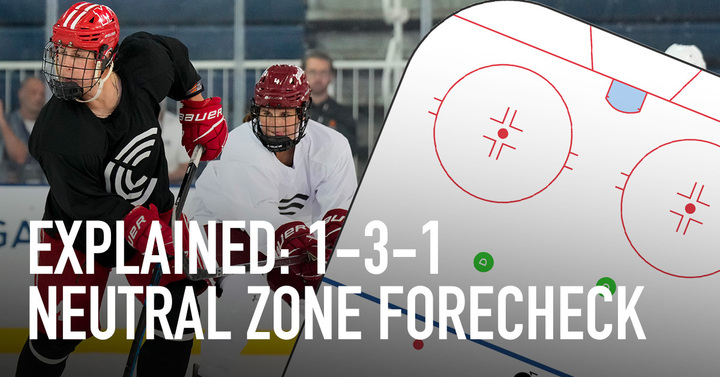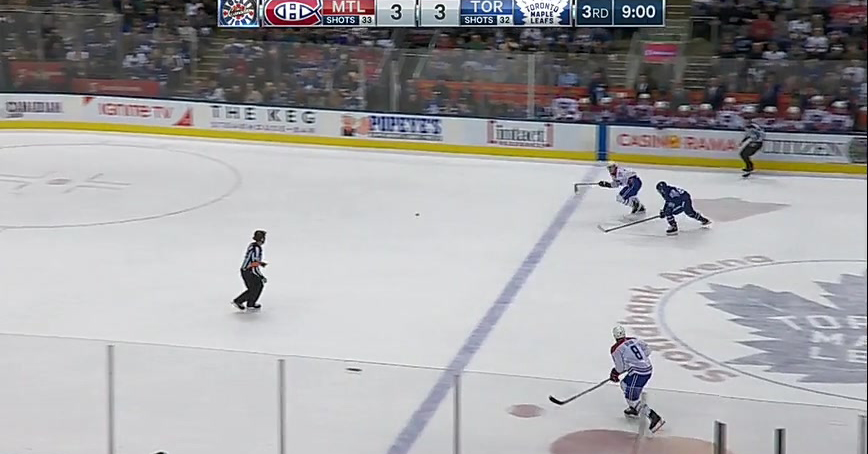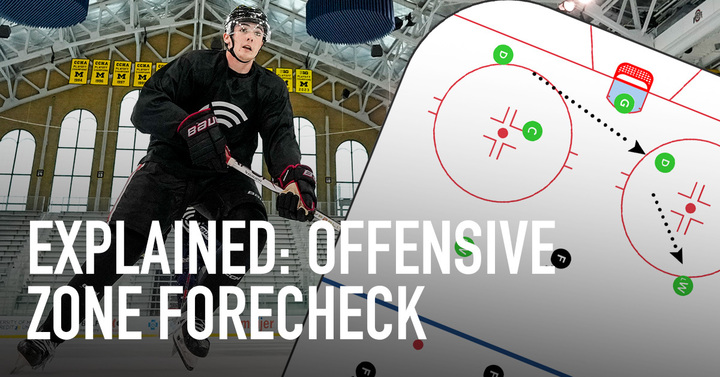
What is an offensive zone forecheck?
An offensive zone forecheck is a tactical defensive strategy executed while the opposing team has possession of the puck in their own defensive zone. While it may seem counterintuitive to call it a defensive strategy, in hockey, defense occurs whenever a team doesn’t have possession of the puck, regardless of where they are on the ice. In other words, the offensive zone forecheck is a strategy to get the puck back in the offensive zone.
The primary purpose of an offensive zone forecheck is to apply strategic pressure on the opposing team to force turnovers before they can successfully break out of their defensive zone. When executed effectively, a good forecheck accomplishes three key objectives: disrupting the opponent's breakout plays, creating immediate scoring opportunities from turnovers, and gradually wearing down the opposing defense throughout the game.
There are several common forecheck formations teams can employ, each with its own strengths and strategic advantages that this series will break down in further detail.
- The 2-1-2 forecheck is highly aggressive, utilizing two forwards deep in the offensive zone to create immediate pressure on the puck carrier and their support option. This system works particularly well against teams with less mobile defensemen or those who struggle with puck movement.
- The 1-2-2 forecheck is more structured, using one primary forechecker to angle the puck carrier while two forwards position themselves in the middle of the zone. This system is effective against teams with skilled puck-moving defensemen, as it prevents clean breakouts while maintaining defensive coverage.
- The 1-1-3 forecheck is a conservative system that emphasizes protecting the middle of the ice while still maintaining offensive zone pressure. This formation is particularly useful when leading in games or playing against teams with strong transition offences.
The success of any forechecking system depends on several critical factors:
- Player conditioning and skating ability to maintain consistent pressure
- Proper positioning and timing of pressure application
- Effective communication between all five players on the ice
- Quick decision-making based on reading the play
A well-executed forecheck can be the difference between controlling the game's tempo and spending excessive time defending in your own zone. Teams that forecheck effectively often find themselves with more possession time and scoring opportunities, while also preventing their opponents from establishing their offensive game plan.
Get everything you need to know about offensive zone forechecks here!
2-1-2 Offensive Zone Forecheck
1-2-2 Offensive Zone Forecheck
1-1-3 Offensive Zone Forecheck
Learn more about the neutral zone forecheck too.

